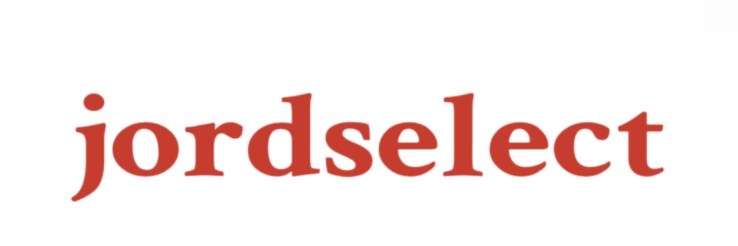Explosive Atmosphere Lighting: LED vs. Traditional Solutions Explained
In industries where explosive atmospheres are a daily reality—think oil rigs, chemical plants, and grain storage facilities—the choice of lighting solutions is critical. The right lighting not only enhances visibility but also plays a pivotal role in ensuring safety and compliance with stringent regulations. Traditional lighting options have long been the go-to for these environments. However, the rise of LED technology presents a game-changing alternative. This blog will delve into the advantages of LED lighting for explosive atmospheres compared to traditional solutions, outlining key factors that any facility manager or safety officer should consider.
Understanding Explosive Atmospheres
Before diving into the debate between LED and traditional lighting, it's important to understand what constitutes an explosive atmosphere. According to ATEX guidelines and the National Fire Protection Association (NFPA) standards, an explosive atmosphere is formed when flammable substances, in the form of gases, vapors, or dust, are present in sufficient quantities to create a hazardous condition. Successful operation in these environments requires specially designed equipment, including lighting, that can withstand flammable conditions without sparking fires or explosions.
The Case for LED Lighting
LED technology has swiftly gained traction in various sectors, and its advantages are particularly pronounced in explosive atmospheres. Here are some compelling reasons to consider LED over traditional lighting:
1. Superior Energy Efficiency
LEDs are known for their energy efficiency, converting over 80% of electrical energy into light compared to traditional incandescent bulbs, which only utilize about 20%. This efficiency not only reduces energy bills but also minimizes heat output—another crucial factor for safety in explosive environments. Lower heat generation reduces the risk of igniting flammable gases and vapors that may be present.
2. Longevity and Reliability
LEDs boast an impressive lifespan, often reaching 50,000 hours or more, which significantly outpaces traditional options like incandescent or fluorescent lights that typically last around 1,000 to 15,000 hours. This longevity translates into reduced maintenance costs and fewer replacements, minimizing downtime in operations. In industries where every minute counts, this advantage can be a game-changer.
3. Improved Safety Features
Safety is paramount in explosive atmospheres, and LEDs come equipped with several features that lend to their safety profile. Many LED fixtures are designed to be explosion-proof or flameproof, meeting stringent international standards. Furthermore, LED lights can often be tailored to specific requirements within zoning classifications (such as Zone 1, Zone 2) to provide added assurance against potential hazards.
4. Better Light Quality
With advancements in technology, LED lights offer superior light quality, presenting options for various color temperatures. This flexibility enhances visibility, reducing eye strain and ensuring that tasks can be performed safely and efficiently. Whether it be for intricate inspection work or general area lighting, the ability to customize lighting types can improve worker productivity and overall safety.
5. Eco-Friendly Considerations
Beyond regulatory compliance and cost-effectiveness, lighting choices can significantly impact environmental sustainability. LED lights typically contain no hazardous materials like mercury, commonly found in fluorescent bulbs, and are 100% recyclable. Given the increasing focus on green practices within industries, adopting LED technology aligns with sustainability goals while ensuring compliance with environmental regulations.
The Drawbacks of Traditional Lighting
While traditional lighting solutions, such as high-intensity discharge (HID) or fluorescent lamps, may still be used in some applications, they come with a series of drawbacks specific to explosive atmospheres:
1. Higher Heat Emission
Traditional bulbs create significant heat, which can escalate the risk of ignition in environments where volatile substances are present. The risk associated with high-heat emitting fixtures makes them less suitable for hazardous locations.
2. Frequent Maintenance
Shorter lifespans mean traditional fixtures require more frequent maintenance and replacement. This increases operational costs and unsafe downtime while crews address lighting issues, introducing a layer of risk management that can be easily avoided with LEDs.
3. Dimming and Performance Issues
Many traditional lighting solutions do not dim effectively, leading to performance issues during low-light conditions or in transitional areas of operation. This can be hazardous, particularly in settings requiring precise visibility.
Conclusion
In summary, choosing the right lighting for explosive atmospheres is not just about meeting regulatory requirements; it’s about ensuring a safe, efficient workplace. LED technology stands out as the superior option due to its energy efficiency, longevity, enhanced safety features, light quality, and environmental sustainability. While traditional lighting solutions have served their purpose in the past, the innovations brought forth by LEDs make them the ideal choice for today’s increasingly demanding industrial conditions. Investing in LED lighting not only safeguards workers but also propels organizations into a more sustainable and profitable future. When making your next lighting decision, consider not just performance, but protection—and opt for solutions that illuminate safely and responsibly.
The company is the world’s best explosive atmosphere lighting, ex proof lighting, flameproof push button supplier. We are your one-stop shop for all needs. Our staff are highly-specialized and will help you find the product you need.

Comments